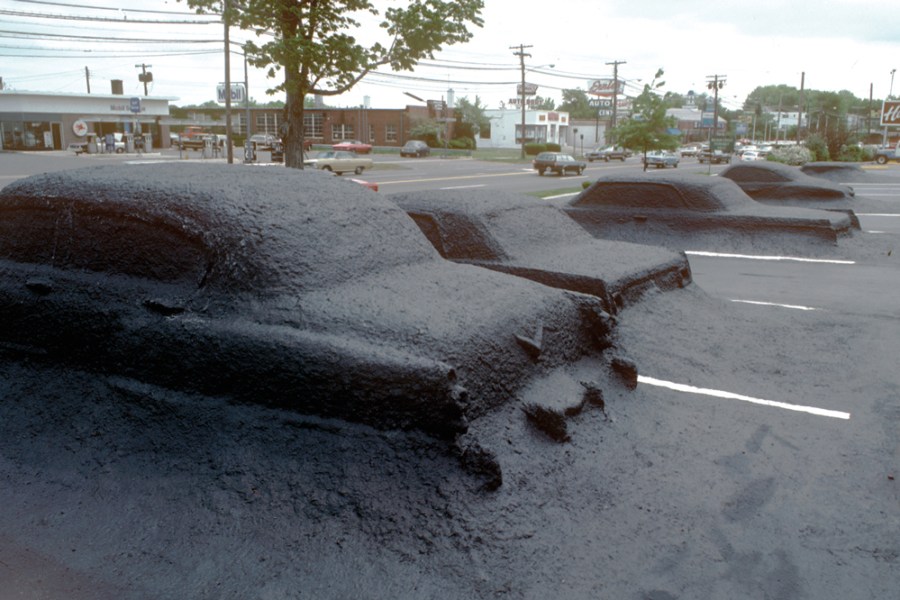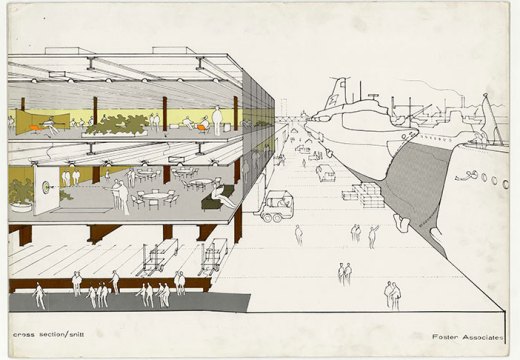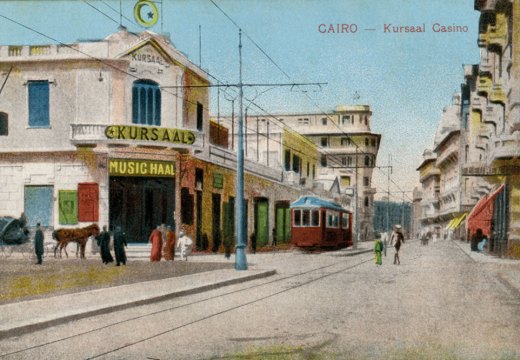Ghost Parking Lot was one of the eeriest, most sinister and most striking pieces of 20th-century land art. The lumpy shapes of automobiles were discernible beneath a gloopy blanket of grey-black asphalt, a landscape of parking – at a shopping mall in Hamden, Connecticut – in which the cars and the surface built for them melded into one. The work was a remarkable comment on the expansion of the freeways, the despoliation of the landscape, and the dominance of the car and the culture of consumption. Even more remarkable was that it was funded by the mall’s developer. Completed in 1978, the work was removed in 2003, having been damaged by ‘cleaning’ (the cars had been re-coated in concrete), neglect, and use – skateboarders and stunt cyclists would use the increasingly indefinable lumps as ramps and obstacles.
It was conceived by the intriguing, affable and once hugely influential artist and designer James Wines (b. 1932). I first came across him in a lecture at architecture school in the 1980s, in which we were shown a picture of ruins in Egypt and then a shot of a curious big-box store Wines had designed, in the middle of a huge car park. The edge of the building was crumbling, and there was a neat pile of bricks and rubble on the ground to one side. It was a powerful juxtaposition but the reason we were being shown it was never quite clear. Was it a suggestion that architecture is mortal? Was it about the Pop reference to antiquity in the middle of an expanse of tarmac and gleaming new cars? Or was it a tongue-in-cheek assessment of how far we have fallen – from monuments to the mall?
It was precisely that ambiguity that made it stick in my mind – and it is that same ambiguity that has made Wines such an important figure. His work, which prefigured concerns about nature, climate, artifice, pop culture and the power of the instant image in the media, is surely due a revival. If his greatest works were still around they would, surely, be Instagram sensations. But tragically, they are not.
Wines was part of the downtown art scene in New York in the 1960s and ’70s, which included Robert Rauschenberg, Gordon Matta-Clark, Donald Judd, Nancy Holt, Mary Miss, Michael Heizer, Vito Acconci and others (a scene which, arguably, died with Matta-Clark in 1978). Collectively and individually, these artists were concerned with removing the artwork from the exclusivity and value system of the gallery and placing it in the street or the landscape, as part of public culture. Wines’ roots were in public art (he is a sculptor rather than an architect by training); he was commissioned by corporations and had become disillusioned with the limitations of a particular kind of public art. It was Wines who in 1970 coined the memorable phrase ‘turd in the plaza’ to describe those works deposited in a corporate landscape between glass blocks (‘Plop art’ is another of his fruity coinages). He also began wondering how architecture could integrate the impulses of art and become provocative and stimulating in its own right.

Watercolour rendering of ‘High-rise of Homes’, an unrealised residential project designed by James Wines & SITE in 1981. © SITE New York
These ideas were crystallised when he met Sydney and Frances Lewis, the founders of the BEST Products catalogue showrooms. Their stores could well have been the default out-of-town retail boxes sitting in the centre of a sea of tarmac, but Wines’ firm Sculpture in the Environment (SITE) transformed the commission into a vivid series of Pop art interventions. The nine BEST stores he designed between 1972 and 1984 featured crumbling corners and collapsing walls, brick fissures and peeling surfaces, strange winter gardens where retail displays should have been and facades that appeared to be falling off. The stores seemed to appear in every architecture book of the era, situated somewhere between a not-yet emerged postmodernism, Claes Oldenburg-style hypertrophied objects, and sets for the big-budget Hollywood disaster movies then so much in vogue.
SITE’s work touched a nerve because it arrived at a moment in which architecture had reached its late modernist nadir, having become a succession of blank, corporate boxes. It acknowledged factors that architecture as a profession had seemed to have forgotten: humour, humanity, nature and the surreal results of playing with scale and making material do things it seemingly should not. It brought the intellect and wit of conceptual art right into the parking lot.

Forest Building in Richmond, Virginia, designed by James Wines & SITE for BEST Products Co. in 1978. © SITE New York
A building designed in 1978 for BEST in Richmond, Virginia was conceived as a split brick box revealing a forest at its core. The trees had been there before the building and Wines incorporated them into something that looked like a readymade ruin, a Romantic vision of a building prefiguring and embodying its own entropy. Now occupied by a Presbyterian church, it is the last SITE store standing, a fantastic tribute to an explosive architectural moment. An unrealised design from 1981 envisaged a stack of suburban homes, a grid containing a variety of houses along with their garden and trees – a densifying of suburbia without the loss of its characteristic greenery and space. These were magical, provocative designs that foreshadowed and, surely, inspired less intriguing but realised buildings by figures such as Stefano Boeri (the Bosco Verticale in Milan) and Thomas Heatherwick (almost all his recent buildings).
Now 87, Wines is still active, hard at work in his downtown New York archive. When I visited him last autumn, he was still thinking, talking and drawing. Red braces have replaced Wines’ leather waistcoat and T-shirts and his long hair and hipster beard have turned white but he is still the same talkative figure he was in his heyday. The walls are covered in his astonishing pencil drawings, delicate, exquisite visions of future landscapes in which trees crowd out the architecture. There are models in acrylic boxes of absurdist, almost Dadaist competition entries next to more sober recent works. The drawings in particular are in demand from collections and institutions and Wines complains about how much it costs just to store all of this.
We may not hear much about him but his designs are still somehow familiar. The original Shake Shack burger joint in Madison Square Park made waves with its green turf roof and it’s still serving. In March the Cooper Hewitt opens ‘Willi Smith: Street Couture’ and Wines, who designed the cult designer’s showroom, has also designed the exhibition. Now that Wines’ concerns have become mainstream, his work seems less radical and less entertaining than it once did. But look at almost any of his great designs and he once more takes on the appearance of the prophet that he has always been.
From the February 2020 issue of Apollo. Preview and subscribe here.














![Masterpiece [Re]discovery 2022. Photo: Ben Fisher Photography, courtesy of Masterpiece London](http://www.apollo-magazine.com/wp-content/uploads/2022/07/MPL2022_4263.jpg)
It’s time for the government of London to return to its rightful home